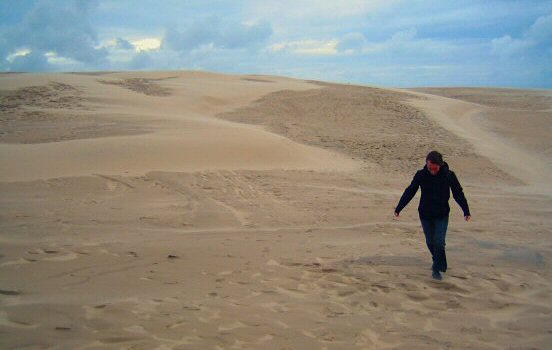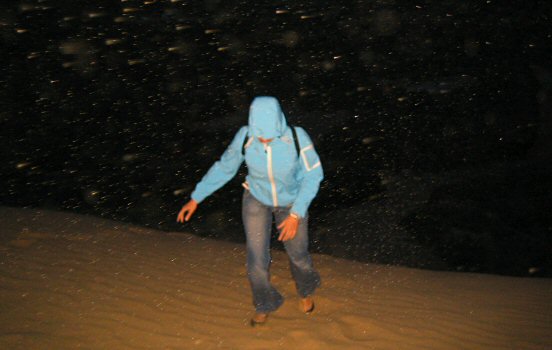There’s something about the Danish west coast that feels like the edge of the world. Not the romantic windswept cliffs of poets and painters, but the raw desolation of a place that never cared you were here to begin with. Harsh and beautiful at the same time.
At sunset I climb the largest sand dune in the area, with sand blowing into my eyes and throats. At the summit I discovered the old marooned lighthouse Rubjerg Knude, built in 1899 at the top of Lønstrup Klint. Built to guide sailors, now it waits for its own burial, swallowed inch by inch by sand dunes on the move.
 Not Paul Atreides.
Not Paul Atreides.
The area has been abandoned for many years, as only ruins and rubble remains of the surrounding buildings. The area feels like planet Arrakis from Dune, rather than an northern European country. Out here, the sea claws at the shoreline like a junkie looking for a fix, and the wind screams a silent shout.
 Near Lønstrup Klint.
Near Lønstrup Klint.
In daylight I roam across Råbjerg Mile, a Saharan fever dream plopped into Scandinavia. A 40-meter-high dune system that drifts eastward like it’s got somewhere better to be. It devours forests and roads without apology. It’s almost impossible to not start humming on the soundtrack from Lawrence of Arabia.
This isn’t the Denmark of mermaids and Lego. It’s a place where nature always wins, and the best you can do is watch, listen and try not to get in the way.
Comments
No comments yet.
Leave a reply